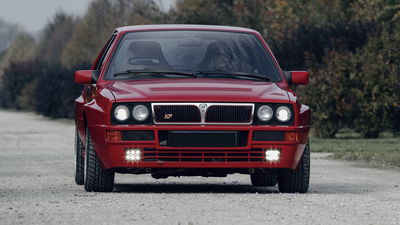The Pros And Cons Of Turbochargers Vs Superchargers: Engineering Explained

When drawing in atmospheric air pressure doesn’t provide enough power, manufacturers and tuners turned to forced induction. It’s the best method of achieving significant power increases with almost any engine, and there are two main ways of getting it done: supercharging and turbocharging.
What’s the difference? A supercharger is an air compressor driven by the crankshaft of an engine, usually connected with a belt. Alternatively, a turbocharger is simply an air compressor driven by an exhaust gas turbine. That’s the one key difference; a supercharger requires engine power to run, while a turbocharger runs off waste energy created by the engine. You might assume that because the turbo is run off waste gases that it’s more efficient, and you’d be correct!
1. Turbocharger advantages and disadvantages:

Pros:
- Significant increase in horsepower.
- Power vs size: allows for smaller engine displacements to produce much more power relative to their size.
- Better fuel economy: smaller engines use less fuel to idle, and have less rotational and reciprocating mass, which improves fuel economy.
- Higher efficiency: turbochargers run off energy that is typically lost in naturally-aspirated and supercharged engines (exhaust gases), thus the recovery of this energy improves the overall efficiency of the engine.
Cons:
- Turbo lag: turbochargers, especially large turbochargers, take time to spool up and provide useful boost.
- Boost threshold: for traditional turbochargers, they are often sized for a certain RPM range where the exhaust gas flow is adequate to provide additional boost for the engine. They typically do not operate across as wide an RPM range as superchargers.
- Power surge: in some turbocharger applications, especially with larger turbos, reaching the boost threshold can provide an almost instantaneous surge in power, which could compromise tyre traction or cause some instability of the car.
- Oil requirement: turbochargers get very hot and often tap into the engine’s oil supply. This calls for additional plumbing, and is more demanding on the engine oil. Superchargers typically do not require engine oil lubrication.
Here’s a quick video on how turbochargers work. Hold judgement on my drawing capabilities, it’s the second video I ever made…
2. Supercharger advantages and disadvantages:

Pros:
- Increased horsepower: adding a supercharger to any engine is a quick solution to boosting power.
- No lag: the supercharger’s biggest advantage over a turbocharger is that it does not have any lag. Power delivery is immediate because the supercharger is driven by the engine’s crankshaft.
- Low RPM boost: good power at low RPM in comparison with turbochargers.
- Price: cost effective way of increasing horsepower.
Cons:
- Less efficient: the biggest disadvantage of superchargers is that they suck engine power simply to produce engine power. They’re run off an engine belt connected to the crankshaft, so you’re essentially powering an air pump with another air pump. Because of this, superchargers are significantly less efficient than turbochargers.
- Reliability: with all forced induction systems (including turbochargers), the engine internals will be exposed to higher pressures and temperatures, which will of course affect the longevity of the engine. It’s best to build the engine from the bottom up to handle these pressures, rather than relying on stock internals.
Superchargers often go hand in hand with big V8s, and they’re certainly capable of producing big power. Here’s a video on how they work:
Which do I prefer?
As an engineer, it’s difficult to not side with efficiency. Turbochargers simply make more sense, as they improve the efficiency of the engine in multiple ways. Superchargers are an extra demand on the engine, even if they are capable of producing useful boost at low RPM. But if you find yourself unable to decide, it is possible to use both simultaneously, and it’s called twincharging.

Where will things head in the future?
Electric turbos will likely be more common in future vehicles, where an electric motor spools up the turbo at low RPMs, producing useful boost until the exhaust gases are sufficient enough to power the turbo. This is exactly what’s happening in Formula 1 with the ERS system, and it’s the solution to the turbo’s biggest disadvantage - turbo lag.
Here’s a video explaining how electric turbochargers are utilised in Formula 1 engines:
With all of this in mind, which is your preference; turbocharger or supercharger? Or are you more of an N/A kind of petrolhead…?













Comments
No comments found.